It is easier to build a house from scratch then renovate an existing model. By understanding four fundamentals of the thermoforming process, packaging can be designed with a strong foundation, saving time and money.
Plastics thermoforming
Thermoforming is a manufacturing process that makes packaging like plastic clamshells, blisters, trays, and medical packaging. The process begins when plastic material is fed into a thermoforming machine, where it is warmed via ovens into a malleable form. The warmed plastic sheet is then pulled into the forming station, where the material is pushed into or pulled over the thermoform tool with heat, pressure, and vacuum. Once the parts have been formed, the sheet is moved into the cutting station, where steel-rule dies cut the thermoformed parts from the sheet. The cut parts are then stripped from the sheet, inspected for quality, and packed for shipment to the end customer. For this process to be successful, the packaging design must incorporate four thermoforming basics: draft, radii, appropriate draw ratios, and flange.
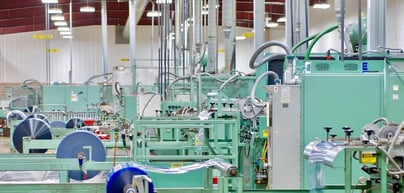
Plastic material on roll is fed into thermoforming machines at Dordan
Draft
Draft is a slight angle that is added to each side of each formed shape on the y-axis of the thermoformed package. Imagine that the plastic is water, being poured over the thermoform tool: It is easier for water to flow down an angled-cavity sidewall then to drop straight down, creating a waterfall effect. The goal of plastic thermoforming is to control the ‘flow’ of the material into the tool in order to make high quality parts; draft is fundamental to this. Draft is also required to strip the thermoformed package from the tool after forming. If all shapes were designed at a 90-degree angle, then it would be impossible to pull the part from the tool without cracking/denting/deforming it.
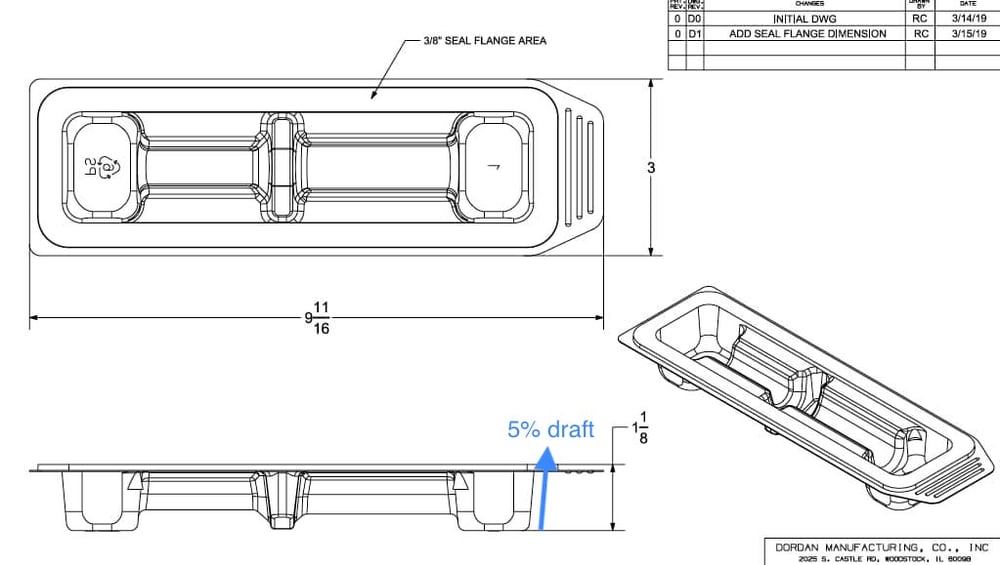
5% draft allows for good material flow throughout the form; it allows parts to be stripped from the tool after forming. Less draft can be used when deemed appropriate.
Radius
Radius means that there are no sharp corners designed into the thermoformed package, as every intersection of material has a gentle arch, rather than a 90-degree pivot. Radii also assist with the flow of material, but are largely the result of the CNC milling process and cylindrical drill bits. The degree of radius fluctuates, depending on project specifications.
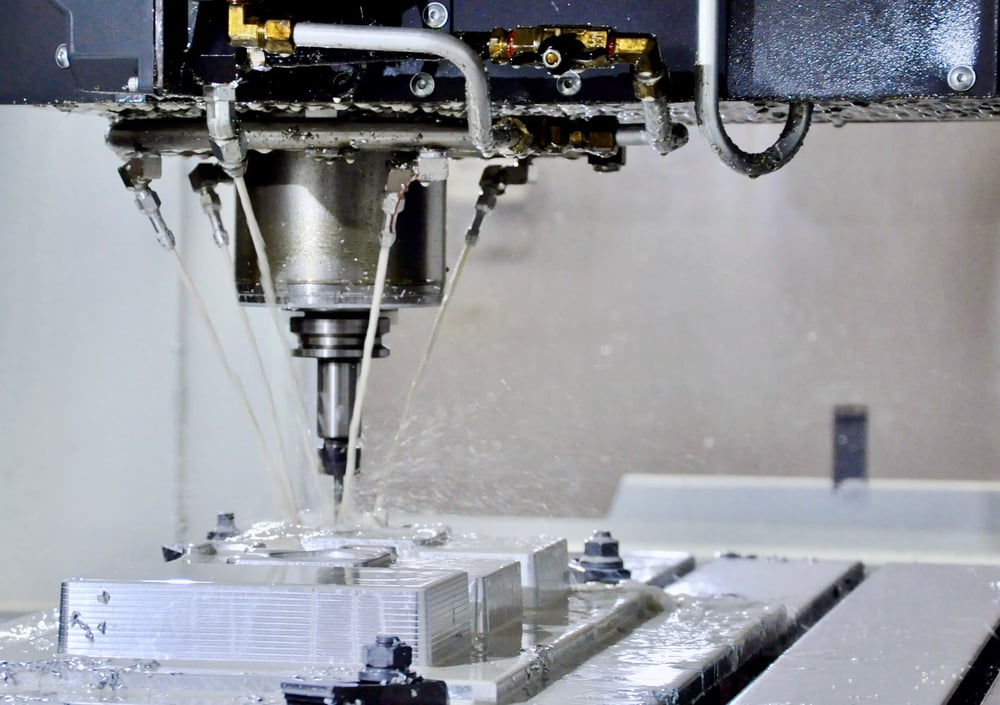
CNC cuts aluminum block to make thermoform tooling at Dordan Manufacturing
Draw Ratio
Draw ratio can be conceptualized as how much material/space is need between packaging cavities to allow for consistent material distribution throughout the form. The ideal draw ratio is 1:1. This means that for every inch of cavity depth required, an inch of ‘width’ is recommended. If the draw ratio of the package design is too aggressive, then there is greater opportunity for thermoforming issues like webbing, denting, etc. Tighter draws are certainly possible, and can be determined in the formal packaging engineering stage.
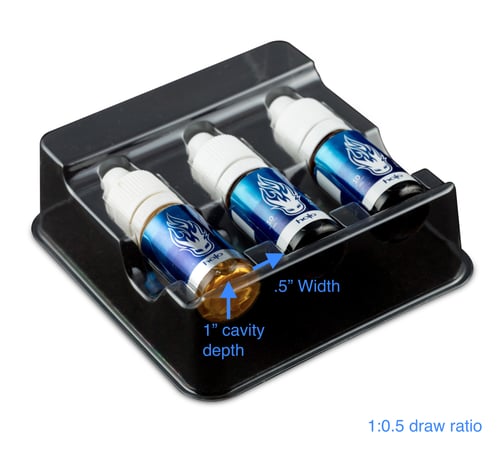 Flange
Flange
Flange is the small plastic ‘lip’ around the edge of any thermoformed package at sheet level. To address stacked manufacturing tolerances, flange is added around the form so when the sheet of parts moves into the die cutting station, the die is able to consistently cut the parts from the sheet without cutting into the package itself. Flange also provides stability and structure to the package. The size of the flange ranges depending on the requirements of the customer and the capabilities and limitations of the thermoforming process.
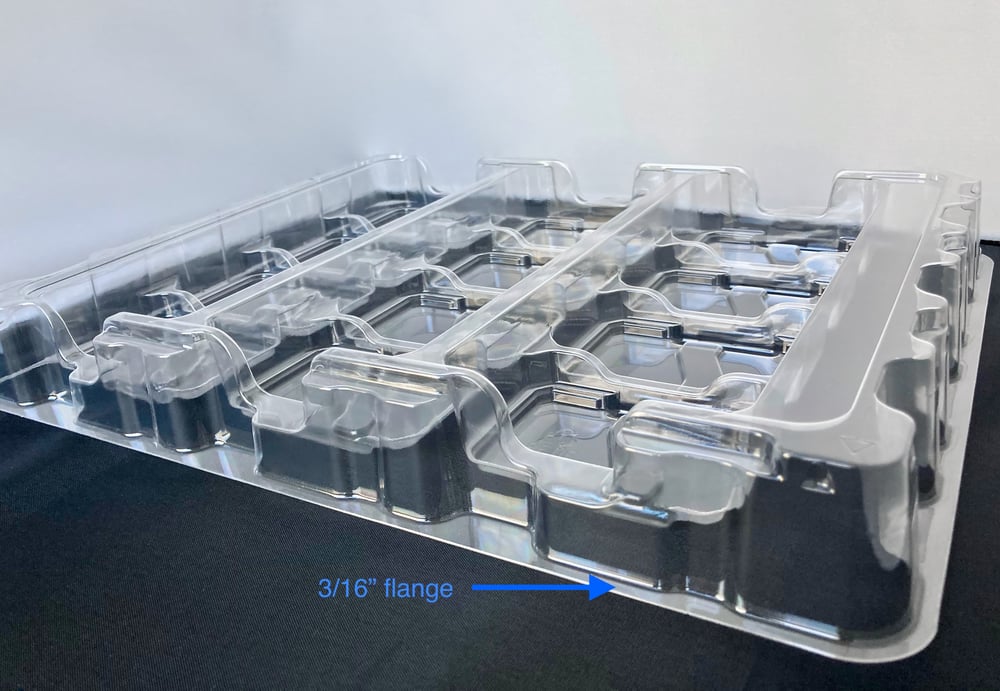
'Standard' flange is 0.1865" per side
Integrating the fundamentals
The goal of custom thermoforming is to produce packaging that fulfills the specific form, fit, and function criteria. To do so, the package must be designed in unison with the fundamentals of the thermoforming process. A good thermoformer custom tailors the integration of these fundamentals into each packaging design it develops. In doing so, the thermoformed parts produced are thoughtfully-engineered for optimum manufacturing, saving time and money.
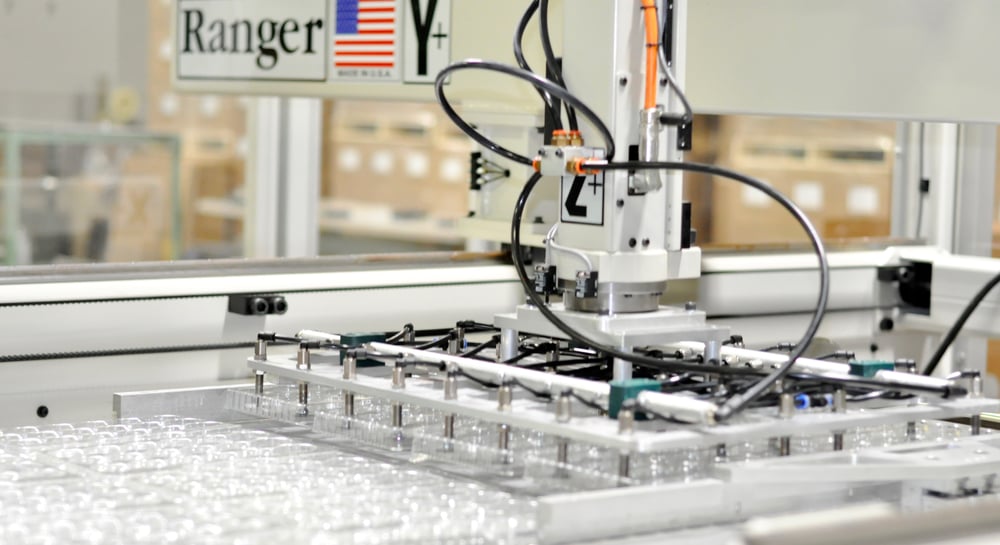
Robot strips thermoformed parts from web after forming at Dordan Manufacturing
